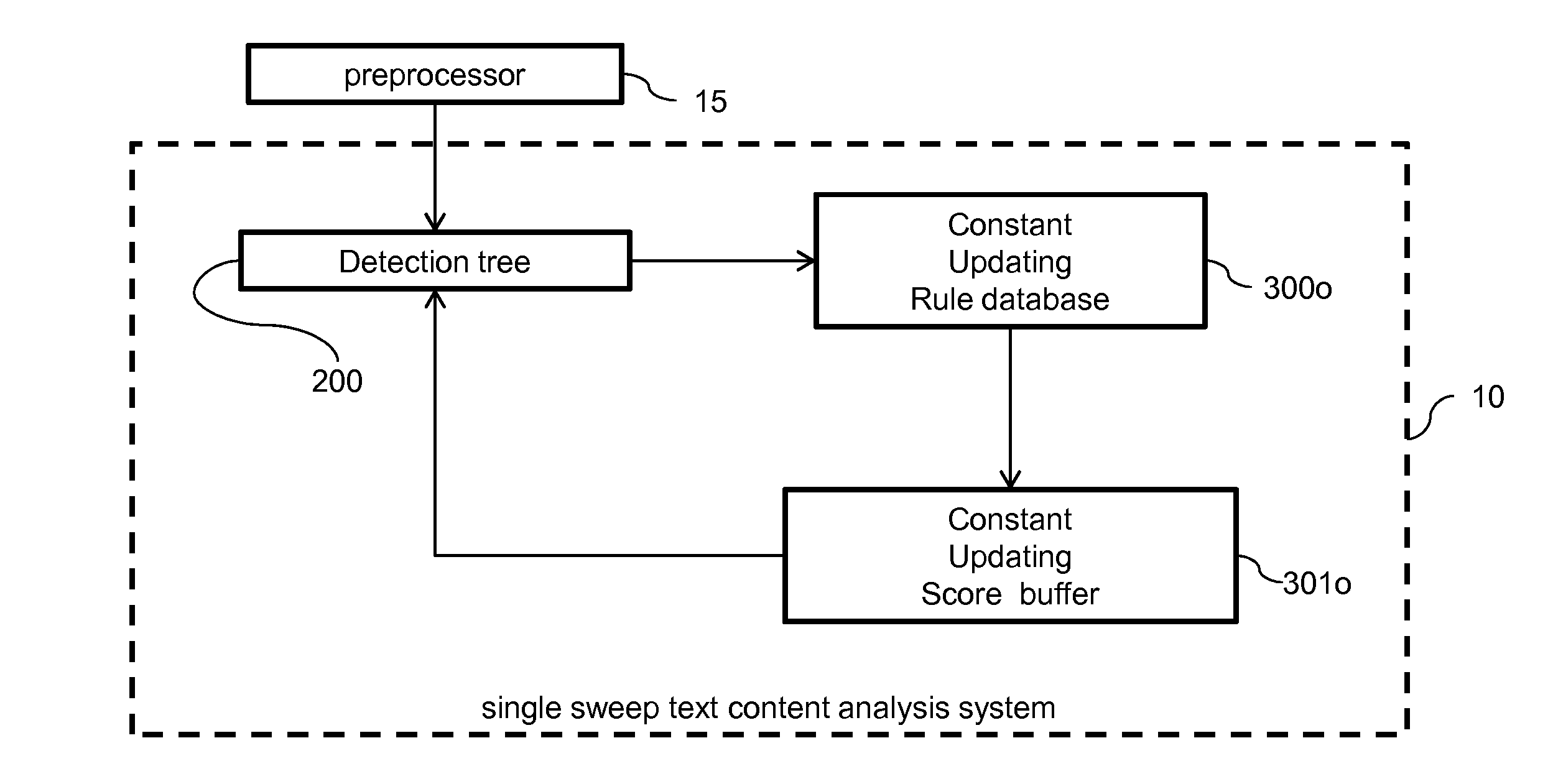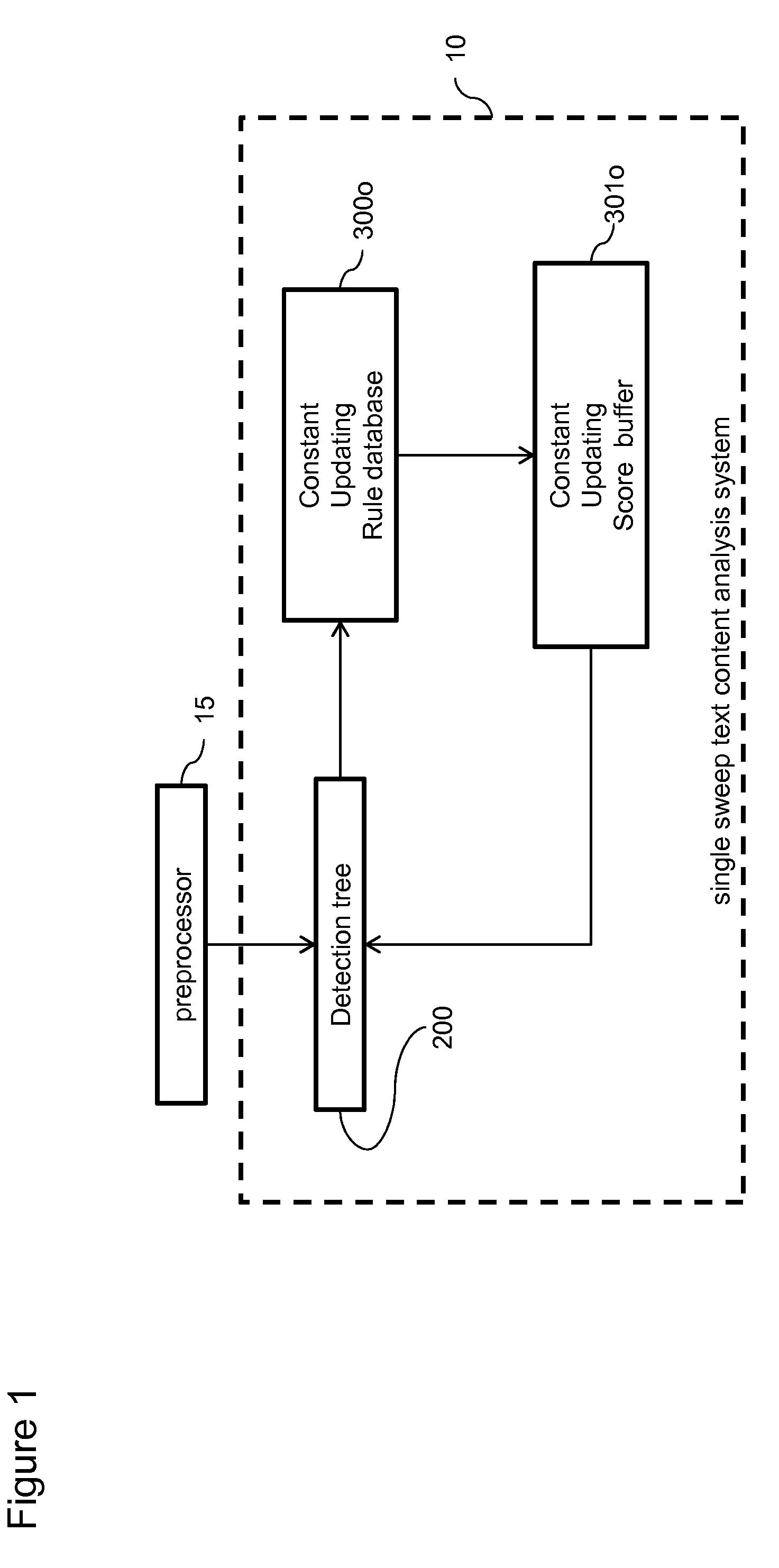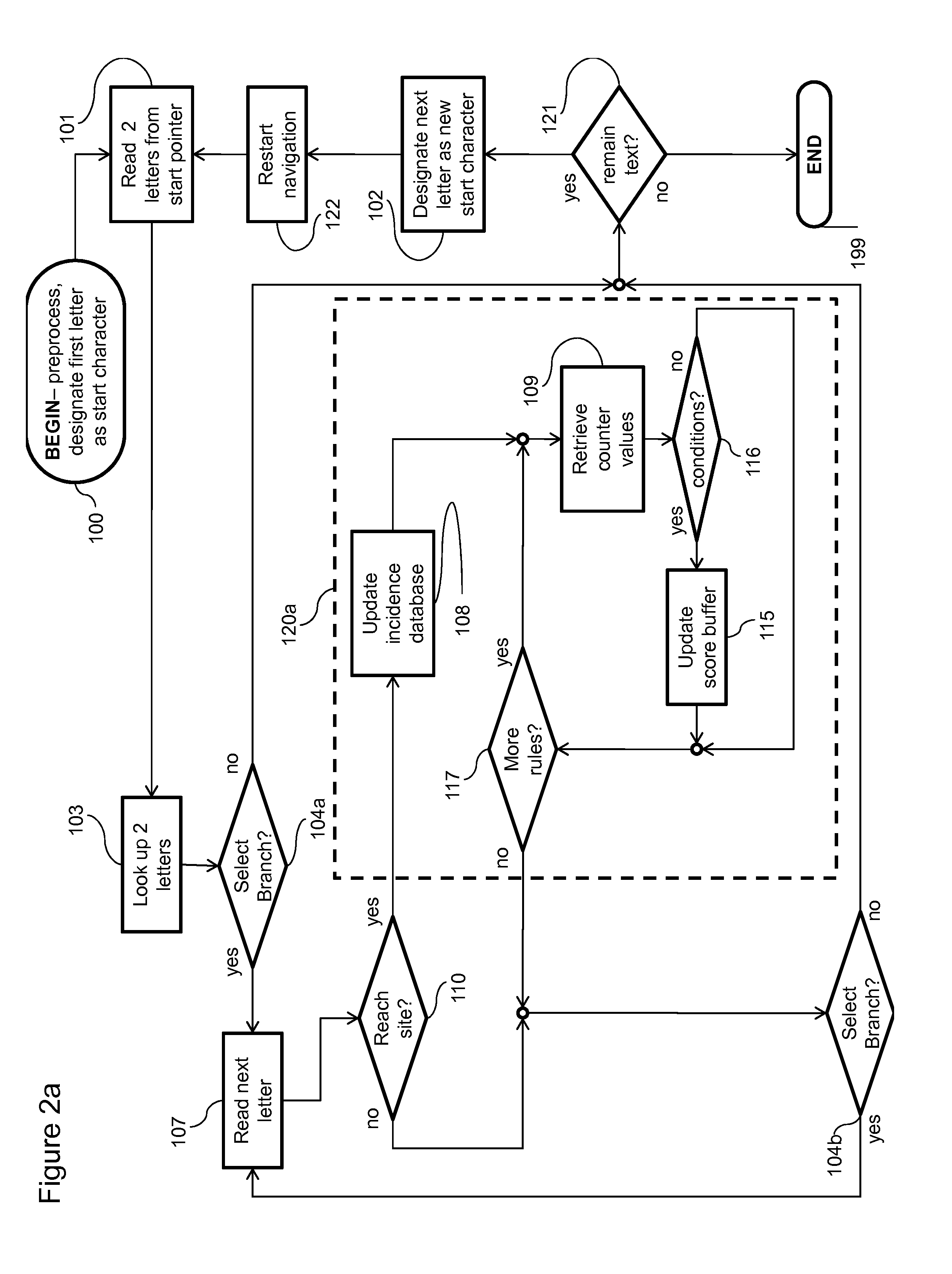Real time single-sweep detection of key words and content analysis
a technology of content analysis and singlesweep detection, applied in the field of real-time singlesweep detection of key words and content analysis, can solve the problem that methods and systems may unobtrusively identify and remove undesired content in real-tim
- Summary
- Abstract
- Description
- Claims
- Application Information
AI Technical Summary
Benefits of technology
Problems solved by technology
Method used
Image
Examples
first embodiment
[0107]In the embodiment of FIGS. 5a-6c the first text is read and detection tree 200 is navigated. When the first keyword T3, “DIRTY,” is read, detection tree 200 has been navigated to reach 110 site 235c, keyword T3, exactly as illustrated above in FIG. 2a of the
[0108]Upon reaching 110 site 235c keyword incidence database 600a:1 is updated 108 exactly as illustrated previously. Checking 111a the current scan id “1” is not equal to the previous encounter id of keyword T3 in keyword incidence database 600a:1, “0”. Therefore, the incidence counter in the first column of the T3 row of keyword incidence database 600a:1 is reinitialized to zero 113 and then incremented 114 to “1” and the previous encounter id in the second column of the T3 row of keyword incidence database 600a:1 is replaced 112a with the current scan id, “1”. The first condition of T3 is 1:R2+3, which means that on the first encounter “1:” of keyword T3, three is added “+3” to the tally of rule R2 in rule tally database...
second embodiment
[0118]In the spirit of the second embodiment many logical constructs can be built of FIGS. 5a,b and 6a-c. For example, it is possible to have a rule that depends on the absence of a keyword. For example, if the rule is “add five to the score if the keyword ‘PICTURE’ does not occur in the text”, then score would be initialized at five and the word “PICTURE” would be a keyword e.g., T8. The condition on keyword T8 would be 1:R7+1 (when the word “PICTURE” is found add one to the count of rule R7) then rule R7 would be 1→>−5 (when the count of R7 attains [reaches or surpasses] 1, subtract 5 from the score).
[0119]In some cases it may be advantageous to string together a group of simple rules in order to form a compound rule. For example FIG. 7a illustrates a system having a list of conditions 791a with seven keywords and a list of rules 792a with four rules. The symbols are the same as in previous embodiments. Each list of conditions 791a,b is associated with an incidence database as in ...
PUM
 Login to View More
Login to View More Abstract
Description
Claims
Application Information
 Login to View More
Login to View More - R&D
- Intellectual Property
- Life Sciences
- Materials
- Tech Scout
- Unparalleled Data Quality
- Higher Quality Content
- 60% Fewer Hallucinations
Browse by: Latest US Patents, China's latest patents, Technical Efficacy Thesaurus, Application Domain, Technology Topic, Popular Technical Reports.
© 2025 PatSnap. All rights reserved.Legal|Privacy policy|Modern Slavery Act Transparency Statement|Sitemap|About US| Contact US: help@patsnap.com



